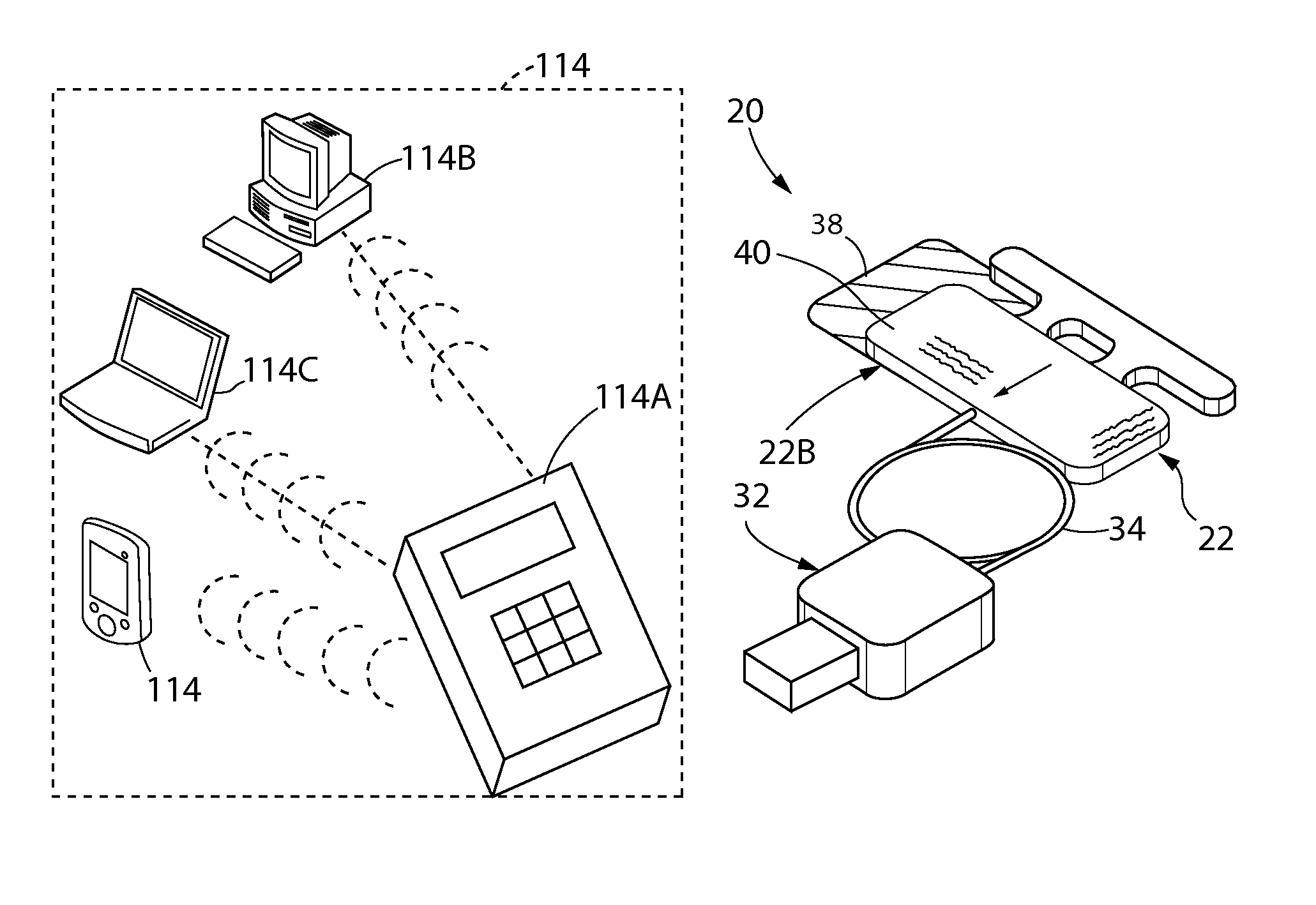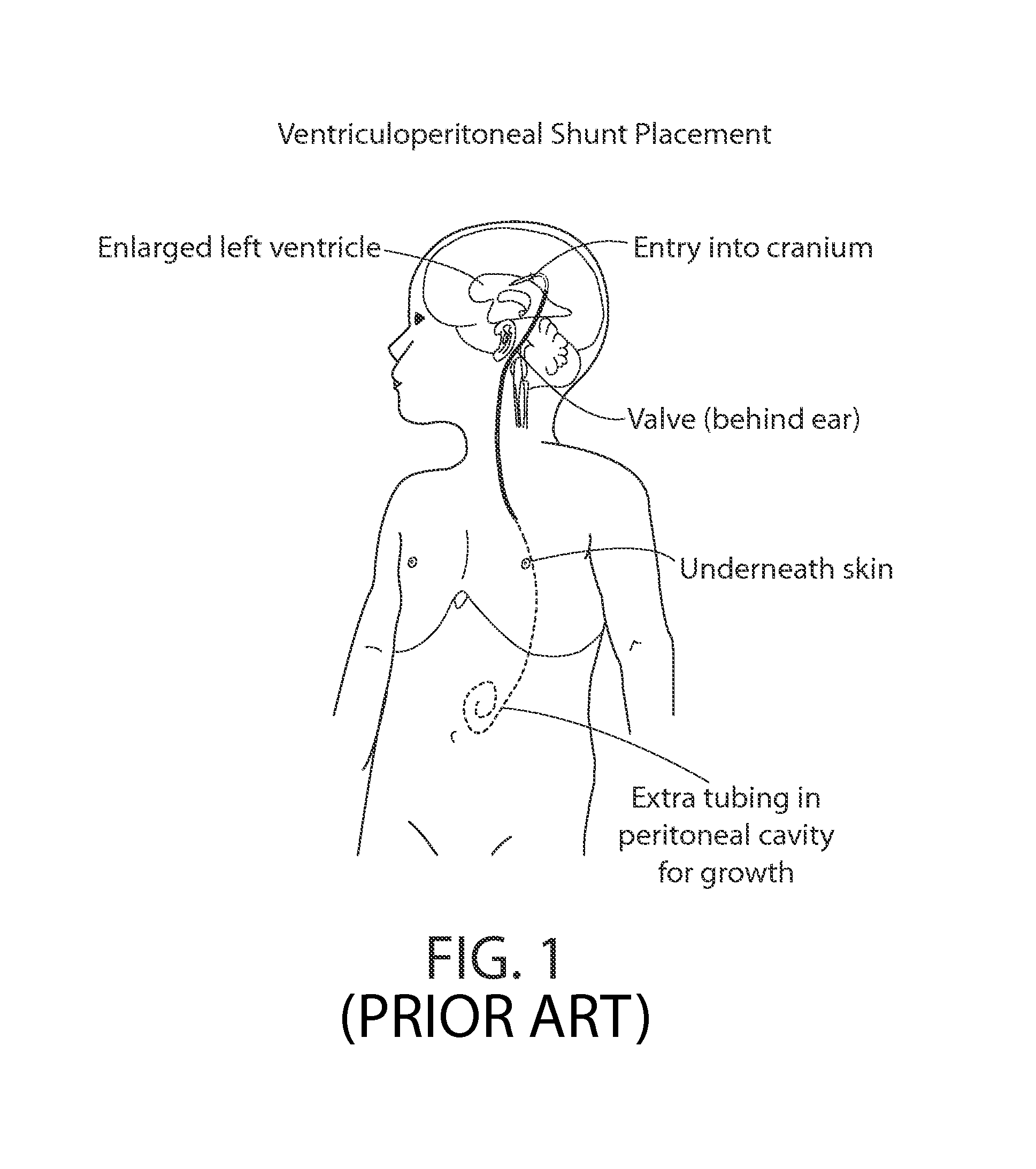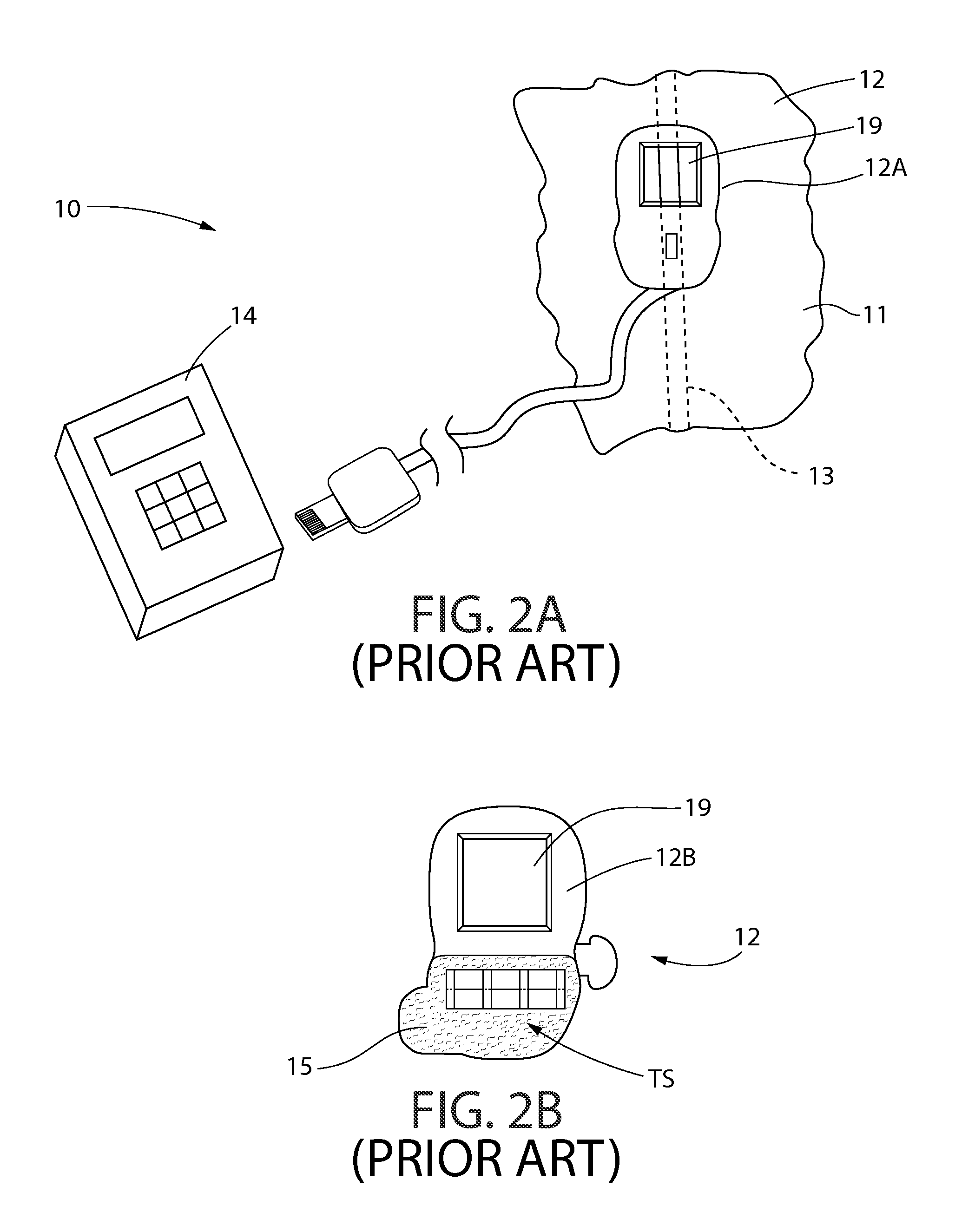CSF shunt flow evaluation apparatus and method using a conformable expanded dynamic range thermosensor
a dynamic range thermosensor and flow evaluation technology, applied in the field of cerebrospinal fluid (csf) shunts, can solve the problems of shunt failure, progressive neurological dysfunction and death, and shunt failure is still almost inevitable during a patient's life,
- Summary
- Abstract
- Description
- Claims
- Application Information
AI Technical Summary
Benefits of technology
Problems solved by technology
Method used
Image
Examples
Embodiment Construction
[0050]As shown most clearly in FIG. 4, the present invention 20 comprises an extended dynamic range (EDR) thermosensor 22 which is coupled to a sensor processing device 114. By way of example only, the sensor processing device 114 may comprise a data acquisition unit (DAQ) 114A that converts and conditions analog temperature sensor signals into digital format for use with, by way of example only, a workstation 114B, a laptop / tablet computer 114C, or hand-held computer device (e.g., personal digital assistant, PDA), or any known computer known in the art, etc., either wired or wirelessly, running ShuntCheck software which analyzes temperature data from the temperature sensors and provides a time-temperature graph and a flow or no-flow result. Although FIG. 4 shows the DAQ 114A relaying the data to the other computer devices, it should be understood that it within the broadest scope of the invention 20 that the DAQ may comprise the ShuntCheck software thereby collecting and analyzing ...
PUM
 Login to View More
Login to View More Abstract
Description
Claims
Application Information
 Login to View More
Login to View More - R&D
- Intellectual Property
- Life Sciences
- Materials
- Tech Scout
- Unparalleled Data Quality
- Higher Quality Content
- 60% Fewer Hallucinations
Browse by: Latest US Patents, China's latest patents, Technical Efficacy Thesaurus, Application Domain, Technology Topic, Popular Technical Reports.
© 2025 PatSnap. All rights reserved.Legal|Privacy policy|Modern Slavery Act Transparency Statement|Sitemap|About US| Contact US: help@patsnap.com



